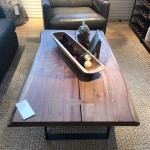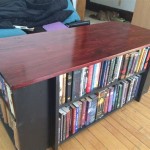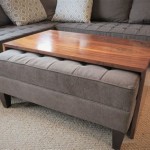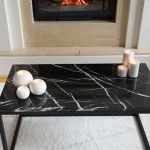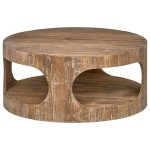How to Make a Pallet Table Top: A Comprehensive Guide
Repurposing wooden pallets into furniture has become a popular and sustainable craft project. Creating a pallet table top is a rewarding undertaking, providing a rustic, unique, and often cost-effective solution for coffee tables, dining tables, or desks. This article provides a comprehensive guide on how to construct a durable and aesthetically pleasing table top using reclaimed pallet wood.
I. Sourcing and Selecting Pallets
The initial step in crafting a pallet table top involves acquiring suitable pallets. Pallets are commonly found discarded behind retail stores, warehouses, and construction sites. However, it's vital to exercise caution and obtain permission before taking pallets. In many jurisdictions, taking unattended pallets can be considered theft.
Furthermore, identifying safe pallets is crucial. Pallets are typically marked with stamps indicating their treatment. Avoid pallets stamped with "MB," which signifies that they have been treated with methyl bromide, a toxic fumigant. Look for pallets marked with "HT" (heat treated) or "KD" (kiln dried), as these treatments are safer alternatives. Pallets with these markings are typically safe to use for indoor furniture projects.
When selecting pallets, inspect them thoroughly for signs of damage such as cracks, rot, insect infestations (primarily termites and carpenter ants), and protruding nails or staples. Choose pallets that are structurally sound and relatively clean. The type of wood used in pallet construction can vary, influencing the final aesthetic of the table top. Pine is common but harder woods exist and may suit the finish you are looking for.
Consider the desired size and shape of the finished table top when selecting pallets. Different pallets have varying dimensions, and the number of pallets needed will depend on the intended size of the table. It's often beneficial to acquire extra pallets to account for unusable boards or to provide options for design variations.
II. Preparing the Pallet Wood
Once the pallets have been sourced and selected, thorough preparation is essential for a successful project. This involves disassembling the pallets and preparing the individual boards.
Disassembly: The most efficient method for disassembling pallets is to use a reciprocating saw (Sawzall) with a metal-cutting blade. Insert the blade between the deck boards and the stringers (the supporting boards underneath) and cut through the nails or screws that hold them together. A crowbar or pry bar can also be used, but this method is more time-consuming and can potentially damage the wood. Wear safety glasses and gloves during the disassembly process to protect against splinters and flying debris.
Cleaning: After disassembly, the pallet boards need to be thoroughly cleaned. Use a stiff brush to remove loose dirt, debris, and splinters. A pressure washer can be employed for a more intensive cleaning, but ensure the wood is allowed to dry completely before proceeding. For stubborn stains or mildew, a solution of water and bleach can be used, followed by thorough rinsing.
De-nailing and De-stapling: Meticulously remove all nails, staples, and other metal fasteners from the pallet boards. Pliers, a nail puller, or a hammer and punch can be used for this purpose. Exercise caution to avoid damaging the wood during this process. Ensuring all metal is removed is crucial for safety and ease of working with the wood later.
Planing and Sanding: To achieve a smooth and uniform surface, planing the pallet boards is highly recommended. A power planer can quickly remove imperfections, level uneven surfaces, and create a consistent thickness. If a power planer is unavailable, a hand plane can be used, although it requires significantly more time and effort. After planing, sand the boards using progressively finer grits of sandpaper (e.g., 80 grit, 120 grit, and 220 grit). Sanding removes any remaining rough spots, smooths the surface, and prepares the wood for finishing.
Optional: Wood Filler: Consider using wood filler to fill any large gaps, knot holes, or imperfections in the pallet boards. Choose a wood filler that matches the color of the wood or can be stained to match. Allow the wood filler to dry completely according to the manufacturer's instructions before sanding it smooth.
III. Assembling the Table Top
With the pallet boards prepared, the next step is to assemble the table top. This involves arranging the boards in the desired pattern and securing them together.
Layout and Design: Arrange the pallet boards on a flat surface in the desired configuration for the table top. Experiment with different patterns and board orientations to achieve the desired aesthetic. Consider alternating board widths or creating a herringbone or chevron pattern. It is also wise to consider the final size and shape before beginning gluing and screwing. If the table is to be round, consider how you will make accurate cuts later. Ensure that the boards are aligned properly and that there are minimal gaps between them.
Gluing: Apply a generous amount of wood glue to the edges of each pallet board before joining them together. Use clamps to hold the boards tightly in place while the glue dries. Ensure the clamps are evenly distributed along the length of the boards to prevent warping or bowing. Allow the glue to dry completely for at least 24 hours, or according to the manufacturer's instructions.
Reinforcement: To provide additional strength and stability to the table top, consider adding reinforcement boards to the underside. Cut several lengths of pallet wood (or other suitable lumber) to span the width of the table top. These reinforcement boards should be spaced evenly apart and attached to the underside of the pallet boards using screws. Ensure the screws are long enough to penetrate the pallet boards but not so long that they protrude through the top surface. Predrilling pilot holes is recommended to prevent splitting the wood.
Edge Treatment (Optional): The edges of the assembled table top can be left raw for a rustic look, or they can be trimmed and finished for a more refined appearance. A circular saw or jigsaw can be used to trim the edges square. Alternatively, a router with a decorative bit can be used to create a rounded or beveled edge. Sand the edges smooth after trimming.
IV. Finishing the Table Top
The final stage of creating a pallet table top involves applying a finish to protect the wood and enhance its appearance.
Sanding (Final): Before applying any finish, perform a final sanding of the entire table top surface. Use fine-grit sandpaper (e.g., 220 grit or higher) to remove any imperfections and create a smooth, even surface. Wipe away any sanding dust with a tack cloth.
Staining (Optional): If desired, apply a wood stain to the table top to alter its color and enhance the grain. Choose a stain that complements the overall aesthetic of the project. Apply the stain evenly with a brush or cloth, following the manufacturer's instructions. Allow the stain to dry completely before proceeding.
Sealing: Applying a sealant is crucial to protect the wood from moisture, stains, and scratches. Several types of sealants are suitable for pallet table tops, including polyurethane, varnish, and lacquer. Choose a sealant that is durable, water-resistant, and compatible with the chosen stain (if any). Apply the sealant in thin, even coats, following the manufacturer's instructions. Allow each coat to dry completely before applying the next. Sand lightly between coats with fine-grit sandpaper to ensure a smooth finish.
Alternative Sealing: Consider using epoxy resin for a hard, durable, and glossy finish. Epoxy resin is particularly suitable for table tops that will be subjected to heavy use or exposure to liquids. Follow the manufacturer's instructions carefully when mixing and applying epoxy resin. Proper ventilation is essential when working with epoxy.
Polishing (Optional): For a higher gloss finish, the table top can be polished after the sealant has completely cured. Use a soft cloth and a polishing compound specifically designed for wood finishes. Buff the surface until the desired level of shine is achieved.
Attaching Legs: Once the finish is dry, the table legs can be attached. A variety of leg styles are available, including metal legs, wooden legs, and hairpin legs. Choose legs that are appropriate for the size and style of the table top. Secure the legs to the underside of the table top using screws or bolts. Ensure the legs are properly aligned and securely fastened.
Creating a pallet table top is a manageable project that combines resourcefulness with creativity. Through careful pallet selection, meticulous preparation, and thoughtful assembly, a unique and functional piece of furniture can be crafted, adding character and sustainability to any living space. This detailed guide is designed to provide a framework for success.

Build A Diy Pallet Table With Herringbone Design Lovely Greens
Wood Pallet Table Diy A Beautiful Mess

How To Build A Farmhouse Table With Pallet Wood Herringbone Top Kezzabeth Diy Renovation Blog

Diy Pallet Table Tops
Wood Pallet Table Diy A Beautiful Mess

Diy Pallet Wood Coffee Table

Beautiful Potentially Short Lived Tabletop Made From Pallet Wood Core77

Diy Pallet Table 100 Wood Mesa De Madera Palets

25 Unique Diy Pallet Table Ideas 99 Pallets Casa Palete Reciclado Móveis

How To Build A Farmhouse Table With Pallet Wood Herringbone Top Kezzabeth Diy Renovation Blog
Related Posts



